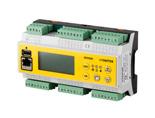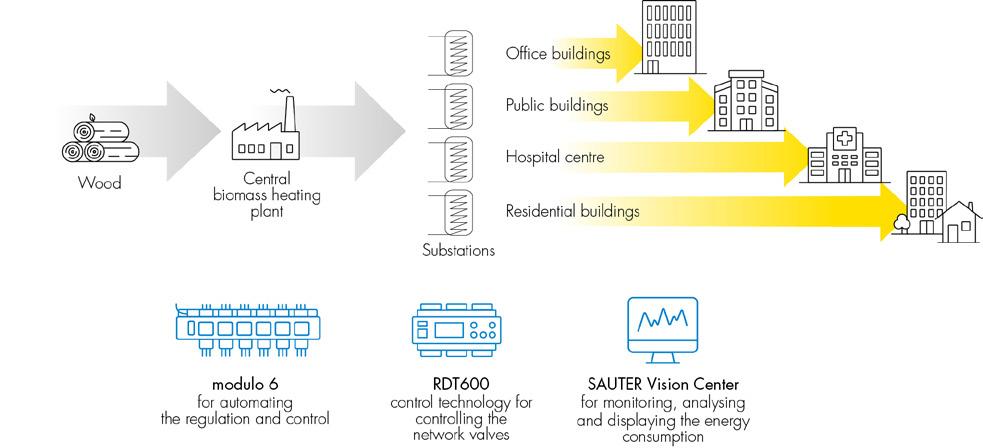
4 minute read
District Heating in the Commune of Bischwiller (FR)
District heating from renewable energies is seen as a future-proof form of heating supply, provided that the grid distribution works efficiently and to optimal standards. The French commune of Bischwiller is setting a good example with the help of intelligent solutions from SAUTER.
The commune of Bischwiller in Alsace has set high targets for itself. Within the scope of an ambitious environment and energy policy, it plans to set up municipal district heating with low CO2 emissions and operated with over 96 per cent renewable energy. The goal is to save around 7,900 t of CO2 every year. An ambitious undertaking that must fulfil not only the highest ecological but also economic criteria. The solution was developed based on a feasibility study: an innovative heating grid with a modular structure that generates sustainable energy in a central biomass heating plant, integrates existing and new infrastructure, and deploys a monitoring system to offer a range of opportunities to continuously optimise its performance.
Energy operator IDEX* was contracted to implement the project. With its many years of experience, the French energy company is aware of the great importance of reliable components and systems and is therefore collaborating with SAUTER France.
The solution
The core of the new heating grid is a biomass heating plant for the carbon-free provision of energy from wood, which has two boilers with outputs of 6.44 and 2.69 MW, as well as a 9-MW gas boiler and two buffer tanks, each with a volume of 50 m3. The existing heating system of the hospital centre, which has three combined boilers and two newly installed heat exchangers, is being integrated into the grid. The distribution network also has 124 substations that communicate via Modbus TCP and BACnet/IP.
The network valves in the substations (also known as switchyards) are controlled by the RDT600 controllers from SAUTER. IDEX is also using a solution from SAUTER to regulate, control and monitor the new biomass heating plant. The modulo 6 automation stations combine their excellent performance with a minimal space requirement. The modular structure enables flexible, bespoke solutions while optimising the overall costs.
All the data from the communicating components comes together in the SAUTER Vision Center. With its integrated energy management module, it provides all the options required to record, process, analyse and display energy values, consumption, KPIs and much more. Making it easy to identify and implement optimisation potential.

The result
Thanks to the continuous data recording and central processing enabled by the intelligent components and systems from SAUTER, moving forward the Bischwiller commune will be able to determine the energy demand for the municipal heating grid and adjust the required outputs accordingly. The demand-optimised energy production and distribution constitute an important step in the planned energy transition. The commune is also equipped for further developments, as the system is intrinsically forward-looking and future-capable due to the scalability and connectivity of the SAUTER modulo 6 automation stations and the SAUTER Vision Center building management.

The RDT600 from SAUTER France
The RDT600 is a configurable, universally deployable controller for heating, ventilation and air-conditioning applications.
Features:
Integrated web server enables fast, user-friendly parameterisation
Online monitoring of the status of the inputs /outputs
Many functions for sequences and system control
Integrated time programme and calendar
Programming saved on USB stick
Communication via Modbus RTU
Activation of 3-point actuators possible
3 access levels
*About IDEX
Founded in 1963 in France, the IDEX Group employs 5,700 people and develops, plans, finances, builds and operates local, decarbonised energy infrastructures for the supply of buildings, towns and industry with local, decarbonised heat and electricity.
www.idex.fr









